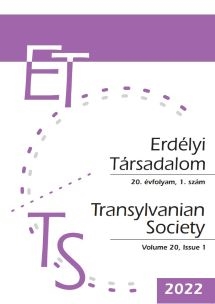A mikrorajon mint életvitelszervezési keret Romániában. Tervek és megvalósulások
The microraion as a framework for organising life in Romania. Plans and implementations
Author(s): Szentesi-Nejur SzendeSubject(s): Political history, Social history, Policy, planning, forecast and speculation, Post-War period (1950 - 1989), History of Communism
Published by: Presa Universitara Clujeana
Keywords: microrayon; socialist-modernism; Romanian mass housing;
Summary/Abstract: The present paper attempts to provide an insight into the microrayon, a form of socialist urban planning perfected in the 1960s, by presenting the development of the ideological and spatial model of the microrayon and its adaptations in Romania through two architecturally and urbanistically significant residential districts of different scales. The microrayon is considered one of the most effective propaganda machines of socialist modernity in the Eastern Bloc countries, amidst an offensive of communist values freed from the oppressive connotations of Stalinist socialist realism. The ideological apparatus, condensed into the broader concept of socialist microrayon, had three main components. The first concerned the specific urban configuration of the microrayon, which, although inspired by Clarence Perry’s neighbourhood unit, was presented as an original Soviet concept, a microcosmos of the ideal socialist community. Therefore, the discourse around the microrayon was all about collective life and the rejection of independent existence in favour of belonging to a complex system. The second mechanism of the ideological impregnation of housing operated at the level of the built space, by reducing housing types to a few standardised models of prefabricated blocks of flats, which, apart from being the result of economics taken to the extreme, were the embodiment of egalitarian politics and communism’s excessive desire for uniformity. At the third level of the intimate family space, the emphasis was on the new, the standardised and the minimal, both in regard of interior space and family life. Another important objective of the study is to shed light on the contradictory relationship between plans and realisations that characterised the communist era housing projects in Romania.
Journal: Erdélyi Társadalom
- Issue Year: 19/2021
- Issue No: 01
- Page Range: 57-71
- Page Count: 15
- Language: Hungarian

